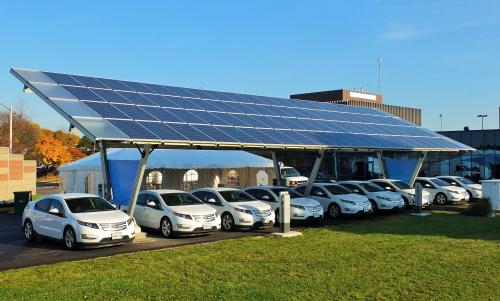The last year has been rough for ridesharing app Uber, what with a litany of regulatory challenges, lawsuits over intellectual property infringement, and questions about gender relations in the workplace. The new year even brought a Twitter-driven #DeleteUber campaign.
So, how’s the business of ridesharing doing? Well, we don’t have good government statistics for 2016 yet, but we do now have such data for 2015, and these show that the hyper-growth of ridesharing that we documented last year is, if anything, accelerating. In fact, just-released data from the U.S. Census Bureau on “nonemployer firms,” which tracks the activity of freelancers (as in the gig economy), shows that 2015 saw the strongest growth of ridesharing yet. Ridesharing through Uber, Lyft, and other apps showed no signs of plateauing in 2015, and instead, the evolving industry spread—including into new metropolitan areas.
The new data are striking and continue to “run the tape” on the diffusion of a signal urban innovation.
In last year’s report, covering the employment effects of the ridesharing apps through 2014, we documented that nonemployer firms in the ground transportation sector (our proxy for driver-contractors in ridesharing) increased by 69 percent nationally between 2010 and 2014, while regular payroll employment—often in cab companies—grew by just 17 percent.
But look at what happened next: tapping the new 2015 data, we find that nonemployer firms in the “rides” industry increased nationally by 217,000 workers (63 percent) in just the one single year.

Overall, the trend in 2015 represents a major acceleration of the previous years’ trend. Specifically, nonemployer firms in the rides industries increased 10 percent between 2012 and 2013, 34 percent between 2013 and 2014, and then by 63 percent in 2015. The spread of ridesharing was accelerating!
With that said, the national trends mask considerable local variation—and some new wrinkles. Though 93 percent of the gig activity in ridesharing took place in the largest 100 metropolitan areas, the distribution of ridesharing across cities has been evolving.
As before, tech-oriented, mostly Western, metro areas continued to set the pace on ridesharing. In this fashion, fast-growing early adopters like San Jose, Austin, Los Angeles, San Diego, Las Vegas, Nashville, and Sacramento all continued to maintain hyper-growth. All of those metropolitan areas saw the numbers of their nonemployer firms in ridesharing double in 2015. Additionally, Austin, Las Vegas, and Nashville all saw the pace of growth quicken markedly. Meanwhile, San Francisco—the earliest of early adopters—maintained its still-torrid growth by increasing its nonemployer firm count by 73 percent. First-wave adopters like Boston and Denver also maintained fast growth.

At the same time, though, 2015 saw ridesharing take off massively in numerous “fast-follower” and Main Street metropolitan areas in the “rest of America.” In many of these metropolitan areas, the one-year growth of gigging in the ridesharing industry strongly outpaced aggregate growth in the previous two years as ridesharing took hold in a major way. Places like Portland (Ore.), Pittsburgh, Riverside, Cleveland, Providence, Miami, Tampa, and Virginia Beach all saw triple-figure nonemployer firm growth in 2015 after much slower adoption in previous years.
Likewise, 2015 was the year in which Uber and Lyft came to the American Midwest in a big way. Heartland locations such as Milwaukee, Cincinnati, Grand Rapids, Memphis, Oklahoma City,Columbus, Indianapolis, Charlotte, and Kansas City all saw their respective ridesharing nonemployer firm numbers jump 65 percent or more in 2015.
Overall, the number of nonemployer firms operating in the ridesharing industry grew by 50 percent or more in 2015 in no fewer than 95 of the largest 100 metropolitan areas.
In this fashion, another year of nonemployer firm data adds new detail to an emerging picture of how a new idea rolls through the city hierarchy. Visible here is the quite rapid way ridesharing spread to the Heartland in 2015 after it conquered California’s tech communities and a few early adopter cities. Having caught on first in larger, denser tech cities, as City Observatory economist Joe Cortright noted last year using our data, the apps are now colonizing smaller, mid-sized markets—with no end in sight.
As to whether growth is continuing during Uber’s year of controversy, we’ll have to look back at 2016’s data when it’s released around this time next year—but the evidence here forecasts another year of solid growth. Ridesharing seems to be bigger than any single app, and a major urban innovation.
The Brookings Institution is committed to quality, independence, and impact.
We are supported by a diverse array of funders. In line with our values and policies, each Brookings publication represents the sole views of its author(s).








Commentary
Ridesharing hits hyper-growth
June 1, 2017